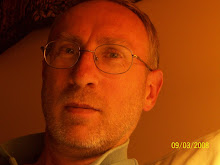
For me at least the film was unsatisfying. The hunger strikes had been such a large part of my own life at the time that I learned nothing new, either factually or emotionally. I know what happened, and I knew the passions on both sides - passions I shared, I would have been at Bobby Sands funeral if it had not coincided with my university exams.
The most strange thing about the film is the way it completely ignores everything that happened outside the prison, with the exception of the assassination of one prison guard. By doing so, it gives the impression that the hunger strikes were an intimate action that happened only within the secrecy of the prison, when in fact they represented a massive explosion of popular anger and activism. Hundreds of thousands of people marched, organised, agitated, and voted in support of the hunger strikers, but this was ignored in the film. The fact that Bobby Sands was elected MP for Fermanagh and South Tyrone during his hunger strike was relegated to a mere title at the end of the film. Yet this is a fact that remains significant in Northern Irish politics a generation later.
Clearly the producer (Steve McQueen) set out to present only the intimacy of Bobby Sands life and death in the prison, but to an audience ignorant of the background this could have the effect of making the whole thing seem irrelevant. I watched the film in a Brussels cinema surrounded by Belgians who, in all likelihood, did not even recognise the voice-over of Margaret Thatcher, perhaps believing her entirely one-sided statements to reflect a 'neutral' narrator. The bilingual subtitling did not make clear that the drawling voice was one of the main protagonists in the story.




 The pieces used in Janggi are flat, as in all other East Asian chess variants. They have the name of the piece written on the flat surface, in green for one side and in red for the other (or, at least this is the commonestcolour combination -modern Korean sets use other clours, such as blue). The pieces are usually hexagonal, as shown below, but again, modern Korean sets (and one reported from 1895) can be circular as well:
The pieces used in Janggi are flat, as in all other East Asian chess variants. They have the name of the piece written on the flat surface, in green for one side and in red for the other (or, at least this is the commonestcolour combination -modern Korean sets use other clours, such as blue). The pieces are usually hexagonal, as shown below, but again, modern Korean sets (and one reported from 1895) can be circular as well:
 Unfortunately, Culin's book is not easily available - Amazon.com has some copies available second-hand, but at a price. I don't remember where I got my copy, but I think it was not too expensive at the time. It is a Dover Publications reproduction from 1991 (ISBN: 0486265935).
Unfortunately, Culin's book is not easily available - Amazon.com has some copies available second-hand, but at a price. I don't remember where I got my copy, but I think it was not too expensive at the time. It is a Dover Publications reproduction from 1991 (ISBN: 0486265935).

















 This one shows the red army from the perspective of its player:
This one shows the red army from the perspective of its player: And this one shows the black army from the perspective of its player:
And this one shows the black army from the perspective of its player:




 This picture shows the shape of the pieces more clearly:
This picture shows the shape of the pieces more clearly:
 Suffice it to say that the reviews the book gets on
Suffice it to say that the reviews the book gets on 



